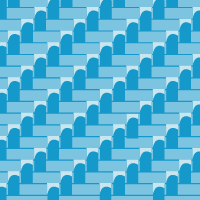Topic Editors


Advanced Polymeric Composites: Processing, Characterization and Mechanical Behavior
Topic Information
Dear Colleagues,
The oil embargo of the 1970s ushered in a new era of lightweighting in the automotive industry, designed to reduce energy consumption and remarkably minimize transportation cost. High density structural materials such as steel and aluminum were replaced by two phase composite materials. Due to their outstanding specific properties, which are remarkably higher than those for steel and aluminum, fibrous composite materials gained ground as the alternative to the conventional structural materials. The ease of design and fabrication into complex and intricate geometries conferred additional benefit to composite materials. The progression from continuous unidirectional fibrous composites to discontinuous unidirectional short fiber composites to laminated composites and nanocomposites has been made without sacrificing the core desire for stiffer and stronger and tougher multiphase composite materials. You are invited to submit your research paper in any area of polymer composite materials, including continuous, discontinuous, and laminated fibrous composites. Papers focusing on particulate composites are also welcome. Submissions focused on nanocomposites reinforced with either graphene, organoclay, or carbon nanotubes are welcome. The availability of assorted matrix materials offers you a wide range of choice, including, but not limited to, thermoplastics, thermosets, and elastomeric matrix materials. The focus of your paper may include, but be not limited to, micromechanics and macromechanics of composite materials. The role of rheology and rheological parameters on the fabrication of composite materials are of interest to this call for papers. Papers focused on the characterization of composite materials and the environmental impact on composites are also welcome. This Topic seeks high-quality works focusing on the following topics:
- Processing of composite materials;
- Characterization of composite materials;
- Mechanical properties of composite materials;
- Additive manufacturing of composite materials;
- Composite materials in construction and rural infrastructure;
- Composite materials for energy storage applications;
- Novel methods for manufacture of composite materials;
- Laminated and hybrid composite materials;
- Manufacture of composite materials for electromagnetic interference shielding;
- Polymer based nanocomposites;
- Sustainable biocomposites;
- Antiflammable polymer nanocomposites;
- Composites for environmental remediation;
- Environmental impact of composite materials.
Prof. Dr. Jude O. Iroh
Dr. Derrick Dean
Prof. Dr. Kirill Levine
Dr. Ramakrishnan Rajagopalan
Topic Editors
Keywords
- polymer matrix composites
- mechanical properties of polymer composites
- additive manufacturing of composites
- sustainable biocomposites and nanocomposites
- characterization of composites
- laminated and hybrid fibrous polymer composites
Participating Journals
| Journal Name | Impact Factor | CiteScore | Launched Year | First Decision (median) | APC | |
|---|---|---|---|---|---|---|

Energies
|
3.2 | 5.5 | 2008 | 16.1 Days | CHF 2600 | Submit |

Journal of Composites Science
|
3.3 | 4.5 | 2017 | 14.7 Days | CHF 1800 | Submit |

Materials
|
3.4 | 5.2 | 2008 | 13.9 Days | CHF 2600 | Submit |

Nanomaterials
|
5.3 | 7.4 | 2010 | 13.6 Days | CHF 2900 | Submit |

Polymers
|
5.0 | 6.6 | 2009 | 13.7 Days | CHF 2700 | Submit |

MDPI Topics is cooperating with Preprints.org and has built a direct connection between MDPI journals and Preprints.org. Authors are encouraged to enjoy the benefits by posting a preprint at Preprints.org prior to publication:
- Immediately share your ideas ahead of publication and establish your research priority;
- Protect your idea from being stolen with this time-stamped preprint article;
- Enhance the exposure and impact of your research;
- Receive feedback from your peers in advance;
- Have it indexed in Web of Science (Preprint Citation Index), Google Scholar, Crossref, SHARE, PrePubMed, Scilit and Europe PMC.


